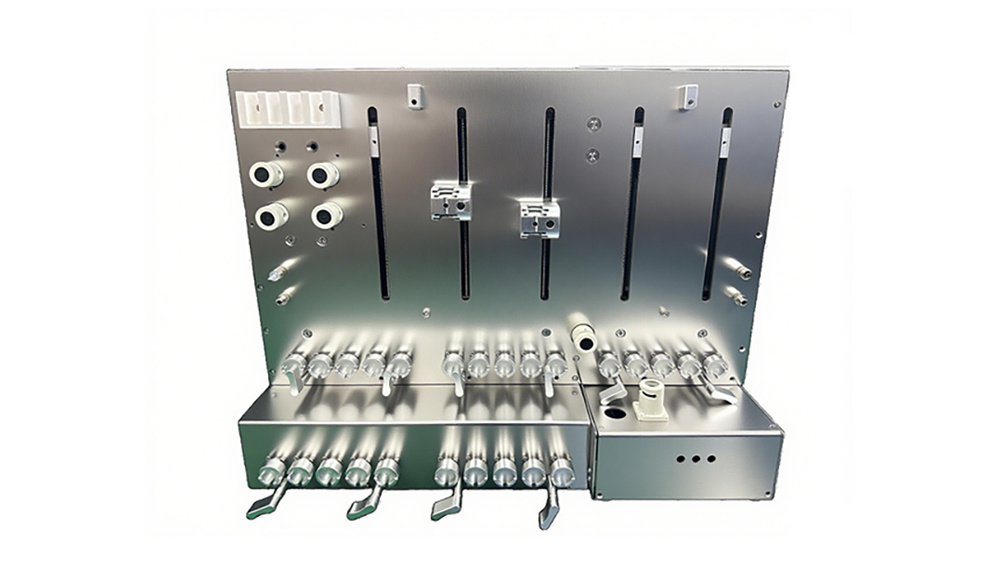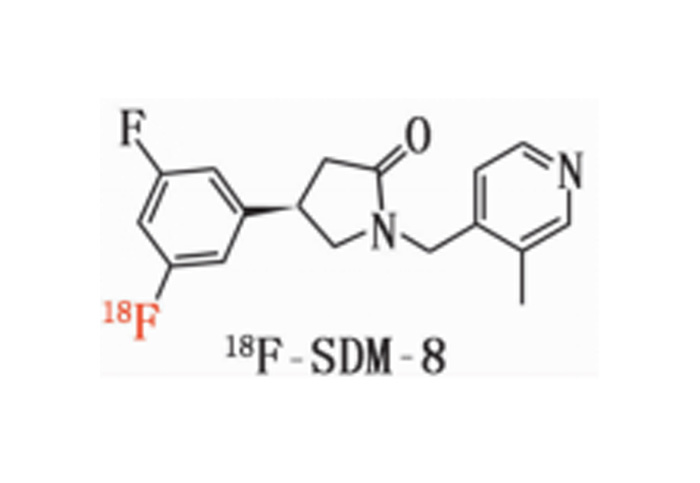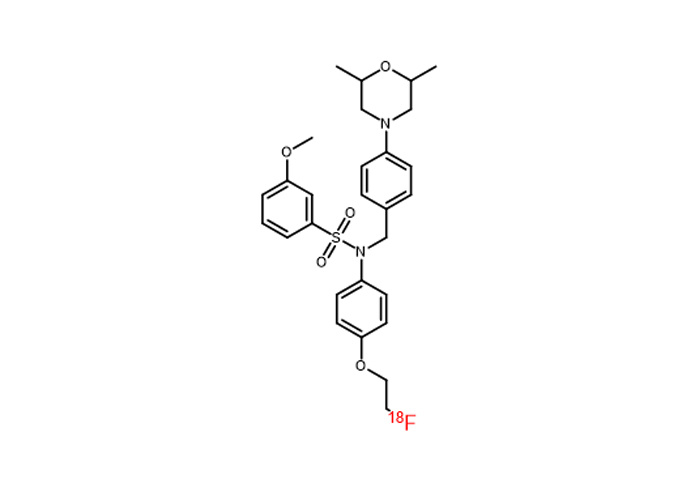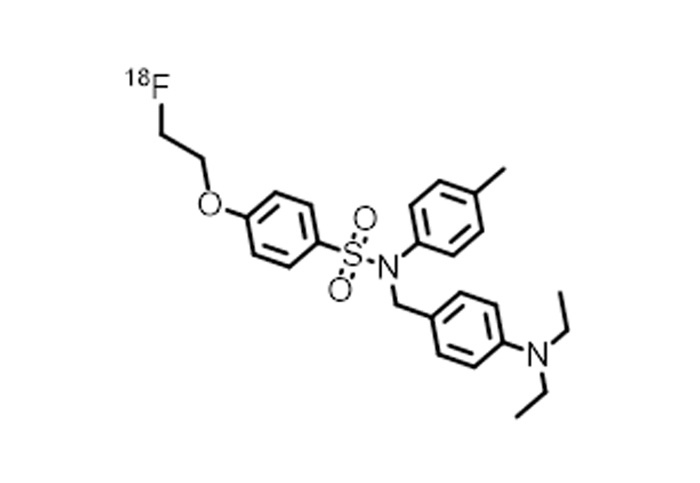
Products
Built multiple sets of modular, multi-functional intelligent drug automatic synthesis platform
18F-AV1451 material
Keywords: synthetic equipment disposable consumables
Classification:
Tracers

Hotline:
18F-AV1451 material
Graphic Details
18F-AV1451 material
1. Drug name (generic name, chemical name, English name, Pinyin, if there is a customized name, the basis of naming should be explained)
Generic name: Flortaucipir F18
Chemical name: 7-(6-fluoropyridine-3)-5H-pyridine [4,3-b]indole
Pinyin: Fú tài pǔ F18
2. Chemical structure, molecular weight and molecular formula of the drug
chemical constitution:
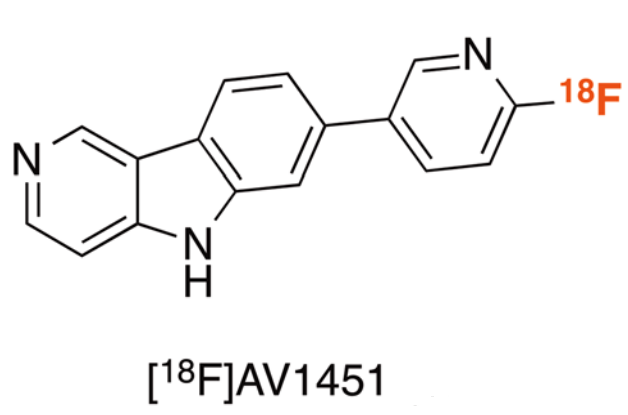
Molecular weight: 303.3
Molecular formula: C16H1518FN3O2
3. Basis of the topic (literature on the development and application of this product at home and abroad)
Domestic: Some research teams and hospitals are actively engaged in relevant studies and synthesis work. For example, the team led by Physicist Han Wei from the Department of Nuclear Medicine at the First Affiliated Hospital of Harbin Medical University successfully synthesized 18F-AV1451, which has facilitated the application of neuro-metabolic molecular imaging in Heilongjiang Province. Director Zhao Yinlong from the Department of Nuclear Medicine at Jilin University Second Hospital applied 18F-AV1451 imaging to the diagnosis of Alzheimer's disease, providing strong support for precise diagnosis of Alzheimer's patients.
Abroad: It is the first tau tracer approved by the US Food and Drug Administration. A large number of experimental studies have been conducted during the development process, including animal models and human trials, to verify its specific binding ability to tau protein, safety and effectiveness.
Application
Domestic: Primarily used for the diagnosis of Alzheimer's disease. For instance, Professor Fu Peng's team from the First Affiliated Hospital of Harbin Medical University successfully diagnosed Alzheimer's disease using a novel molecular probe, 18F-AV1451. Through PET/MRI imaging, they found increased uptake of 18F-AV1451 in the bilateral parieto-occipital regions, left frontal lobe, bilateral hippocampus, and bilateral temporal lobes, with positive tau protein imaging, providing crucial evidence for the diagnosis of the disease.
Abroad: Widely used in Alzheimer's disease research and clinical diagnosis, PET imaging detects tau protein tangles in the brain, aiding doctors in early diagnosis, condition assessment, and disease progression studies. Studies have shown that 18F-AV1451 has an accuracy rate of about 85.7% in clinically distinguishing Alzheimer's disease from mild cognitive impairment (MCI). However, it also has issues such as relatively low affinity for non-Alzheimer's tau lesions and off-target effects.
4. Research methods, experimental conditions and other data of the target organs and whole body imaging or simulated clinical function measurement tests of experimental animals, and imaging or functional measurement results observed at various phases of the test
I. Whole body imaging and delayed imaging of experimental animals
1. Materials and methods
1.1 Experimental animals
The experimental animal is a mouse weighing approximately 20g, provided by the Experimental Animal Center of Hangzhou Medical College. The scanning was conducted at the PET center of the Second Affiliated Hospital of Zhejiang University. Images were collected 45 minutes after drug injection to obtain the distribution map of the drug in the body. The signal in the brain is relatively weak, as it can penetrate the blood-brain barrier. In healthy mice, there is almost no tau protein deposition in the brain, making it difficult for the drug to accumulate.
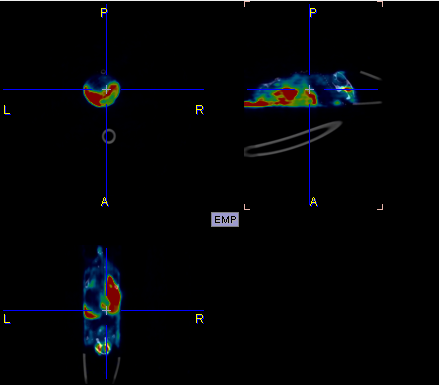
5. Instructions for drugs
[Drug Name]
common name:
Fluorine [18F]- β-Tau protein injection
18F-AV1451
Chemical name: 7-(6-fluoropyridine-3)-5H-pyridine [4,3-b]indole
Pinyin: Fú tài pǔ F18
[element]
The main component and its chemical name of this product is: β-Tau protein
Its structural formula is

[shape and properties]
This product is a yellow liquid.
[indication]
18F-AV1451 is used for the diagnosis and differential diagnosis of Alzheimer's disease (AD)
[18F-AV1451 PET/CT brain imaging process]
Patient Appointment: The clinical doctor must communicate and make an appointment with the doctors at this center at least one day in advance. The clinical doctor or the doctor scheduled by this center should inform the patient that they can eat normally on the day of the examination, but if possible, fasting for 2 hours is required. Stop using AD drugs and any medications affecting the brain within 24 hours before the AV45 scan. Patients need to report to this center one hour before the scheduled appointment time.
History collection: brief medical history, clinical diagnosis, and informed consent signed by the subjects.
Preparation before examination: inform the patient to drink water and go to the toilet, and do not drink water or go to the toilet again from after injection of imaging agent to before examination.
Before injection: the drug group confirms the measurement time and dose of each injection, and reports to the nursing group. The nursing group confirms the injection time and returns the residue to the drug group, and the drug group records the residual dose and time.
Injection of 18F-AV1451: only one patient can be injected at a time. The injection dose is 10 mCi (±10%). The nursing team should strictly record the injection time.
Patient rest: The subject should be asked to remain quiet, silent and conscious before the examination. During this period, family members or caregivers may accompany, but please do not talk or use electronic products.
PET/CT acquisition: The scan must be performed exactly 50 minutes after the injection of the contrast agent. The static scan duration is 50 minutes post-injection, with a collection time of 20 minutes. The dynamic acquisition period is from 0 to 70 minutes. The parameters and reconstruction methods for CT and PET should be consistent with those used for brain 18F-FDG imaging. Strict control must be maintained over the injection time and scan duration, and the scan times must be meticulously recorded.
Image interpretation and analysis: timely interpretation of images.
Report: Report in time.
Follow-up: 18F-AV1451 and 18F-FDG brain imaging should be spaced at least 10 half-lives (or 20 hours).
This product is only for use in medical units with a radioactive Drug Use License.
[untoward effect]
Not yet found.
[taboo]
Not yet found.
[matters need attention]
If the product changes color or becomes cloudy, stop using it.
This product is for use only in medical units with a Radioactive Drug Use License.
[Pregnant and lactating women]
Pregnant and lactating women are prohibited from using.
[Medication for children]
Reduce the dose appropriately according to body weight.
[specifications]
0.37~7.40GBq。
[Storage and packaging]
This product is sealed in a 30ml vial and placed in a lead container.
[term of validity]
The time from calibration is calculated as 6 hours.
[production unit]
Name: Hangzhou Jirui Technology Co., LTD
Address: Fengqigu Yunzhang Industrial Park, No.319 Shenjia Road, Gongshu District, Hangzhou City
Zip code: 234122
Phone number: 0571-87701916
Previous Page
18F-JR1003 material
Next Page
Related Products
Consulting

